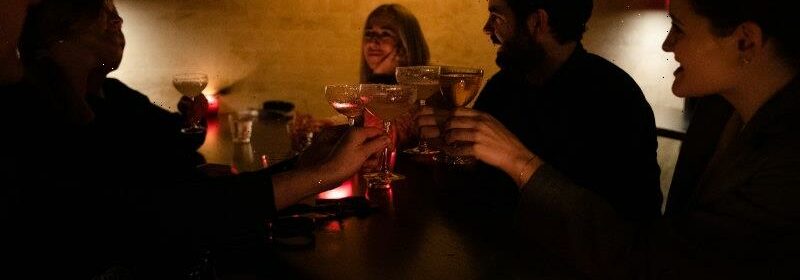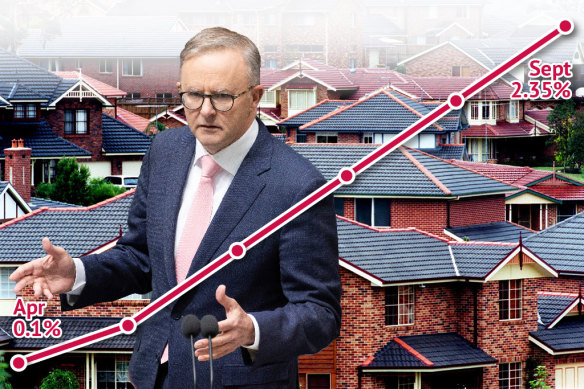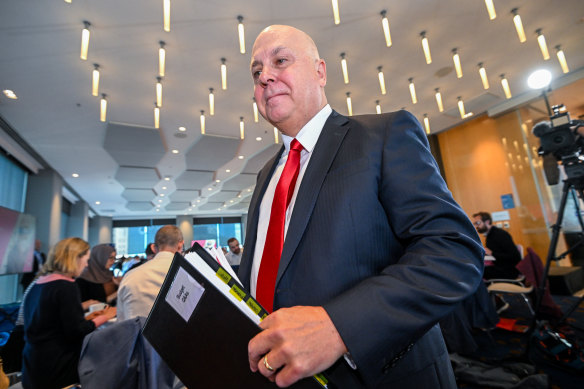State economy propped up by consumer and government spending sprees

The Victorian economy is being kept afloat by a post-lockdown consumer spending splurge on booze, clothes, movies and eating out as well as a state government splurge on infrastructure investment.
State final demand – a key measure of the economy that tallies up public and private investment and spending – increased by 1 per cent in the June quarter, according to figures released by the Bureau of Statistics on Wednesday.
That was lower than NSW (up 1.9 per cent) and South Australia (1.5 per cent), equal to Queensland, but ahead of Western Australia (0.1 per cent) and Tasmania (0.6 per cent).
The figures suggest the Victorian economy is rebounding solidly as Premier Daniel Andrews gears up to fight the November 26 state election.
But there are also warning signs. The private sector, according to the figures, remains relatively anaemic, with the recent housing boom unwinding rapidly and businesses continuing to be crimped by shortages of labour and raw materials.
During the June quarter, private sector investment dropped 2.7 per cent, dragged down by a 10.9 per cent slump in non-housing construction and a 5.2 per cent decline in housing investment.
The Reserve Bank’s cash rate has been lifted five times since May, from 0.1 to 2.35 per cent. Credit:Fairfax Media
Even so, private sector investment was still 2.5 per cent higher than a year earlier, although that was partly due to the now-defunct housing boom. Spending on renovations was up 12.1 per cent over the year.
The quarterly drop in private sector investment was offset by a 14.8 per cent increase in state and local government investment, as the Andrews government ramped up spending on schools, hospitals, public transport, roads and public housing.
Victorian consumers have also opened their wallets. During the quarter, the volume of alcohol purchased increased 6.2 per cent (after factoring in inflation) to be 12 per cent higher than a year earlier. Spending in hotels, cafes and restaurants grew 7.7 per cent during the quarter and 22 per cent over the year, while spending on clothes and shoes increased by 3.9 per cent to 30.3 per cent higher than a year earlier. Spending on recreational activities such as movies and sports increased by 2.1 per cent in the quarter and 23.8 per cent over the year.
Sarah-Jayne McGill, manager of Soak Bar + Beauty salon, said she had noticed the increased spending over winter.
“I really feel like people are just appreciating things like self-care so much more after COVID and things like that,” she said.
The South Yarra business has seen more clients visit the salon during the colder months and more people were “celebrating the small things”.
“People are definitely catching up inside, and doing it over their nails and with a cocktail is a great way to do that,” McGill said.
Chapel Street Precinct general manager Chrissie Maus said there has been a distinct shift in where people are spending their money, with more bars, restaurants, and fitness and beauty services opening.
Victorian Treasurer Tim Pallas said Victoria’s post-pandemic recovery has been “outstanding”.Credit:Joe Armao
“These businesses capitalise on people’s new outlook on life post-COVID. It’s all about lifestyle,” she said.
The figures cover two of the five interest rate rises so far this year, as the Reserve Bank tries to quash inflation, with a quarter of a percentage point interest rate rise announced on May 3 and a half percentage point increase on June 7. They suggest the interest rate pain had done little to dampen consumer spending, at least at the end of June.
State Treasurer Tim Pallas said the figures showed Victoria’s post-pandemic recovery had been “outstanding”.
“Investment is continuing apace, jobs are growing across the state and businesses are looking to expand,” Pallas said. “Victorians feel confident about the future and that confidence is well-placed.”
The Andrews government has announced a massive infrastructure agenda. According to the budget, it expects to spend an annual average of more than $21 billion over the next few years – more than four times the annual average between 2005 and 2015.
The Morning Edition newsletter is our guide to the day’s most important and interesting stories, analysis and insights. Sign up here.
Most Viewed in National
From our partners
Source: Read Full Article

